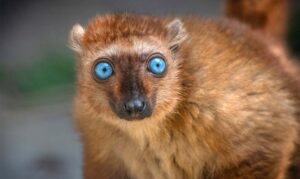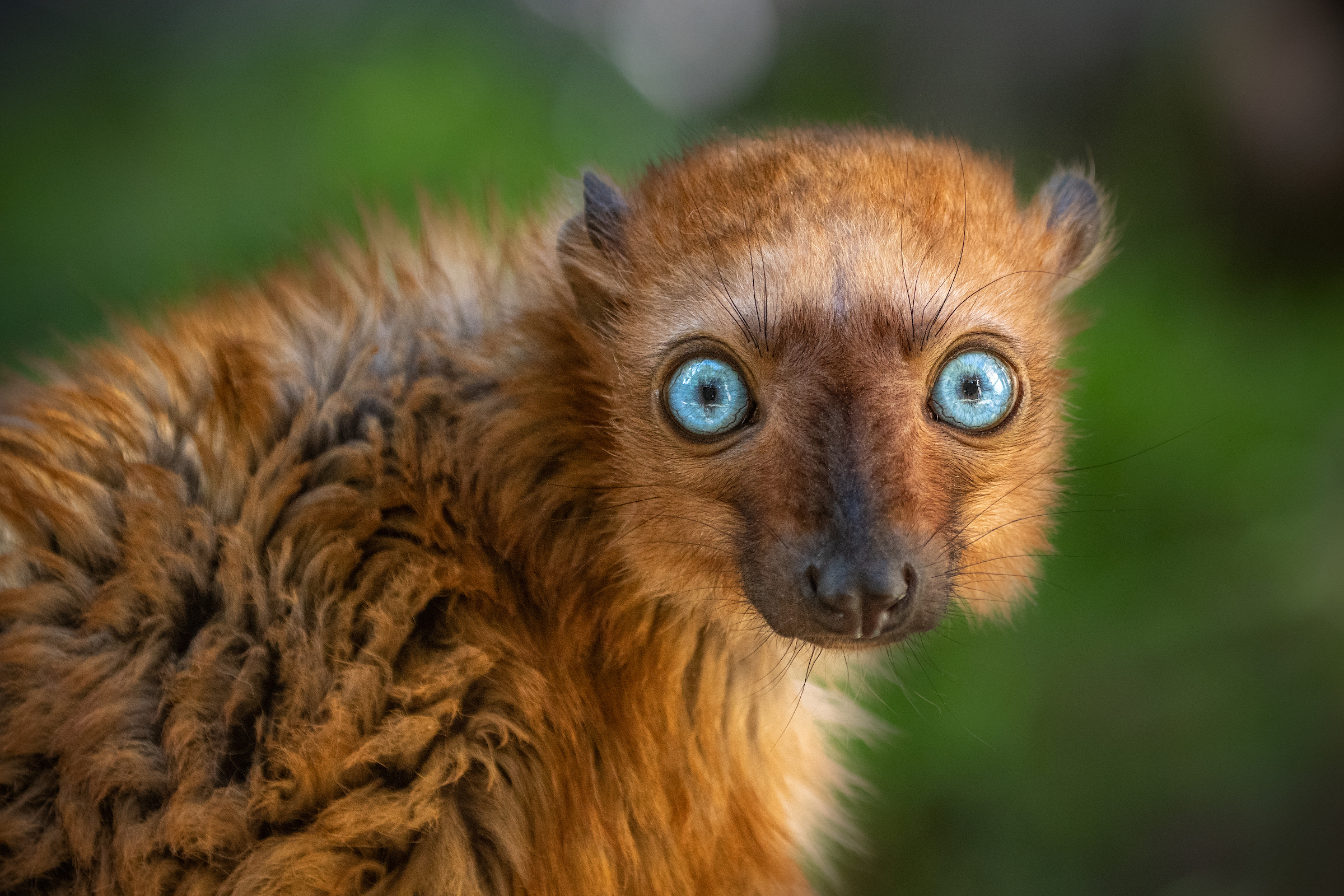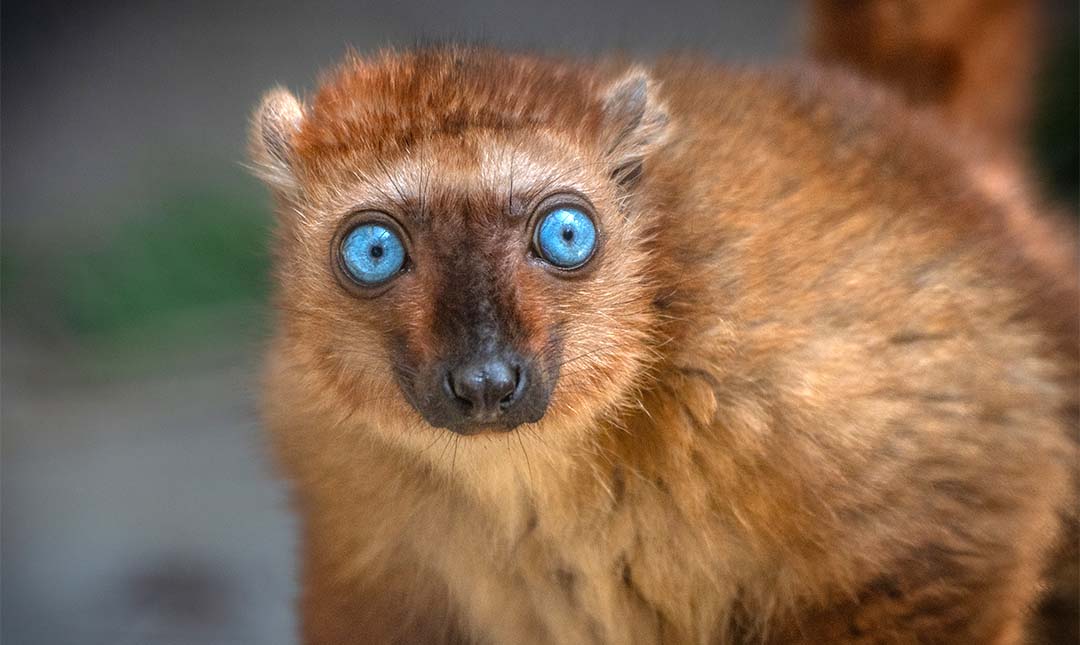About
The blue-eyed black lemur is one of the most endangered primates in the world. Native to Madagascar, there may be fewer than 1,000 individuals remaining in the wild. These lemurs rely more on their sense of smell than vision, using a long muzzle, wet nose, and whiskers (called vibrissae) to track family members, identify threats, and determine which trees have fruit. Blue-eyed black lemurs are arboreal and spend most of their day in the trees, foraging and napping. Led by the most dominant female of the group, they move through the trees with agility and can leap distances up to 25 feet. Lemurs greet one another by grooming each other’s fur using protruding bottom teeth like a comb. A specialized claw on their second toe is used for personal grooming.
Other than humans, blue-eyed black lemurs are the only primate to have blue eyes. Blue eyes are rare in the wild as they offer less sun protection than eyes with darker irises. Males and females have different colored fur, a trait called sexual dichromatism. The species is named for the males who have black fur, while females are a reddish-tan color. Infants are born reddish tan to match their mother. Male infants will turn black at around four to eight weeks of age.

Habitat
Blue-eyed black lemurs live in fragmented tropical forests on the northwestern tip of Madagascar.
Diet
This species is primarily frugivorous. Fruit comprises 60 to 90 percent of their diet, but they will also eat flowers, insects (including cicadas), and fungi.
Physical Characteristics
This lemur’s body length may grow up to 18 inches, but the tail alone may measure up to 25 inches. They weigh only three to five pounds. Lifespan in the wild is unknown, but in human care, they can live 27–30 years.
LOCATION WITHIN THE ZOO
You’ll find this animal in the Africa section. See Zoo Map.


